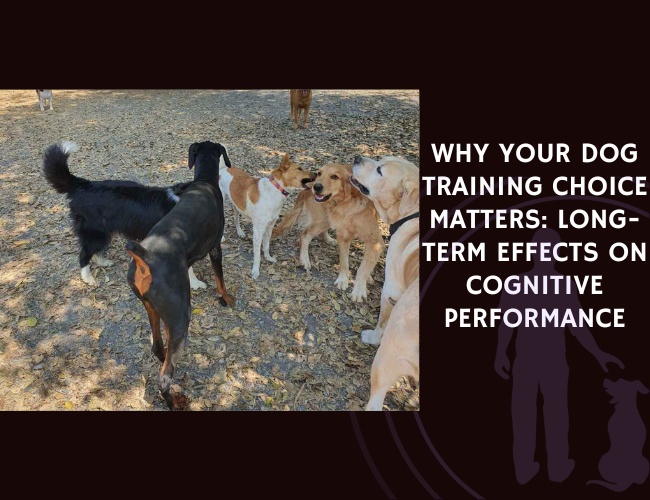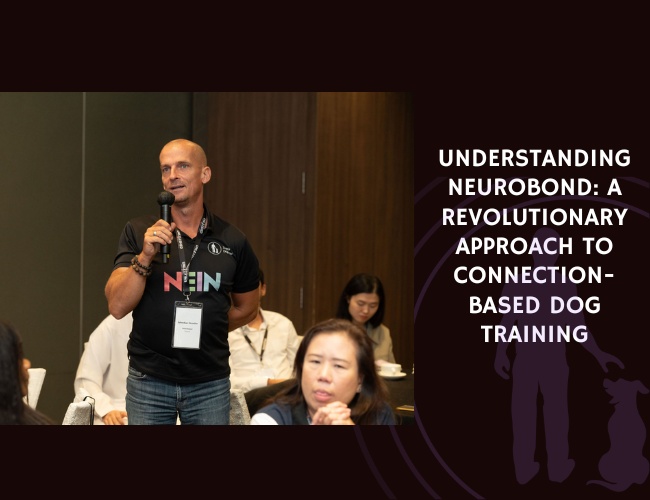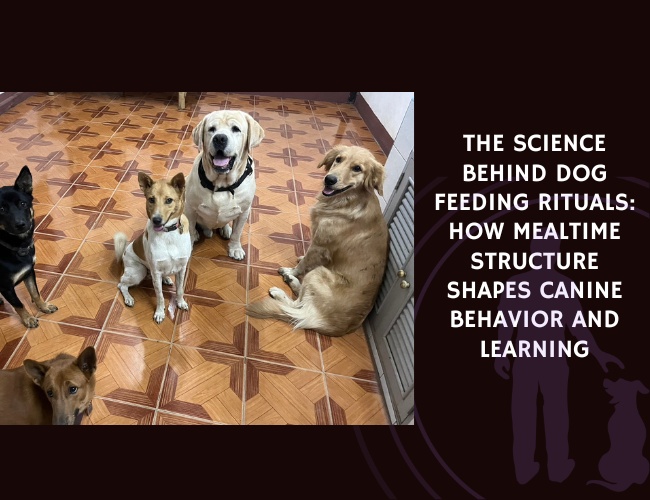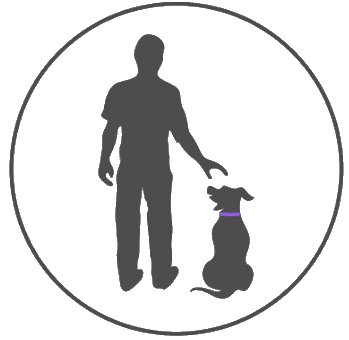Understanding Different Training Approaches
When it comes to training your dog, the approach you choose can have significant and lasting effects on your furry friend’s cognitive development and overall well-being. In this chapter, we will delve into the definitions and key characteristics of aversive training methods and reward-based training techniques. We’ll also compare the fundamental principles of both approaches to give you a clear understanding of their implications.
Definition and Key Characteristics of Aversive Training Methods
Aversive training methods rely on the use of unpleasant stimuli to discourage undesirable behavior. These techniques, also known as punishment-based training, aim to correct a dog’s behavior through negative reinforcement. Here are some key characteristics:
- Punishment-Based: Aversive training often involves the application of physical corrections, such as leash jerks, prong collars, or electric shocks.
- Fear-Inducing: These methods can create a fear of punishment in the dog, which may lead to temporary compliance but can also cause long-term anxiety or fearfulness.
- Immediate Response: Aversive methods typically aim for an immediate response to stop unwanted behavior quickly.
- Dominance-Based: This training approach often emphasizes establishing the owner’s dominance over the dog, based on outdated notions of canine behavior hierarchy.
While aversive training can produce quick results, the long-term impact on a dog’s emotional and cognitive well-being can be detrimental, potentially leading to behavioral issues such as aggression or fear.
Overview of Reward-Based Training Techniques
Reward-based training, in contrast, focuses on encouraging desired behavior through positive reinforcement. This approach is based on the principle of offering rewards, such as treats, praise, or play, to motivate the dog. Key characteristics include:
- Positive Reinforcement: Utilizing rewards to reinforce good behavior, making the experience enjoyable and rewarding for your dog.
- Relationship-Building: Strengthening the bond between the owner and the dog through trust and mutual respect.
- Engagement and Fun: Training sessions are designed to be fun and engaging, promoting an enthusiastic learning environment for the dog.
- Consistency and Patience: Reward-based methods may take longer to yield results, but they focus on building a strong foundation for long-term behavior change.
This approach not only fosters a happy and confident dog but also enhances the dog-owner relationship, making training a positive experience for both.
Comparison of Fundamental Principles Between Both Approaches
To better understand the impact of these training approaches, let’s compare their fundamental principles:
- Motivation:
- Aversive: Uses fear or discomfort to motivate the dog to avoid unwanted behavior.
- Reward-Based: Utilizes positive reinforcement to motivate the dog to repeat desired behaviors.
- Learning Environment:
- Aversive: Can create a stressful learning environment where the dog may be anxious and hesitant.
- Reward-Based: Establishes a safe and encouraging environment that promotes curiosity and learning.
- Behavior Outcomes:
- Aversive: May lead to quick but short-lived compliance, with potential negative side effects such as aggression or fear.
- Reward-Based: Often results in long-lasting behavior change and a well-adjusted, confident dog.
- Cognitive and Emotional Impact:
- Aversive: Can hinder cognitive development and increase stress levels.
- Reward-Based: Supports cognitive growth and emotional well-being, fostering a positive attitude toward learning.
As we explore the immediate impact on dog behavior in the following sections, it becomes evident that the training method you choose can profoundly influence your dog’s stress responses, learning engagement, and overall cognitive performance. Understanding these differences can help you make more informed and compassionate training choices for your canine companion.
Immediate Impact on Dog Behavior
Stress Responses and Cortisol Levels in Aversive Training
When it comes to dog training, the impact on your pet’s stress levels can vary significantly depending on the method you choose. Aversive training methods, which rely on punishment and dominance techniques, are known to elevate stress responses in dogs. These methods might include actions like yelling, using shock collars, or leash jerking. Such practices trigger a dog’s fight-or-flight response, leading to increased cortisol levels. Cortisol is a hormone associated with stress, and when present in high amounts, it can have detrimental effects on a dog’s health and well-being.
Research has shown that dogs subjected to aversive training methods exhibit elevated cortisol levels and other stress-related behaviors. These behaviors might include excessive panting, licking lips, or displaying a tucked tail—indicative signs that your dog is experiencing fear or anxiety. It’s essential to consider these physiological responses when assessing the immediate impact of training methods on your dog’s stress levels.
Behavioral Indicators During Reward-Based Training Sessions
On the flip side, reward-based training techniques create a much more positive environment, resulting in more favorable behavioral indicators. Reward-based training, also known as positive reinforcement training, involves using treats, praise, and affection to encourage good behavior. This method focuses on reinforcing desired actions rather than punishing undesirable ones.
During reward-based training sessions, dogs typically show signs of enjoyment and engagement. You’ll often notice your dog wagging its tail, making eye contact, and responding enthusiastically to commands. This positive interaction not only reinforces the behavior you want to see but also strengthens the bond between you and your pet. By associating training with positive experiences, dogs are more likely to remain attentive and eager to learn.
Observable Differences in Learning Engagement
When comparing aversive and reward-based training methods, one of the most noticeable differences is the level of learning engagement. Aversive training methods can often result in dogs becoming shut down or disengaged during training sessions. The fear of punishment and the associated stress can lead dogs to become hesitant and anxious, making them less likely to participate actively.
Conversely, reward-based training promotes a more stimulating and engaging learning environment. Dogs trained with positive reinforcement are generally more motivated and willing to try new things. They associate the training process with rewards, leading to higher levels of enthusiasm and a more proactive approach to learning. This engagement translates into better retention of commands and a more enjoyable training experience for both the dog and the owner.
Understanding these immediate impacts on dog behavior is crucial for any pet owner looking to choose the best training method for their furry friend. By recognizing the stress responses and behavioral indicators associated with aversive training, as well as the positive outcomes from reward-based techniques, you can make informed decisions that benefit your dog’s overall well-being.
Moving forward, we’ll dive deeper into the long-term cognitive effects of these training methods, examining how they influence problem-solving abilities, information retention, and overall cognitive development. Understanding these aspects will further highlight the importance of choosing the right training approach for your dog’s lifelong happiness and health.
The Impact of Training on Cognitive Development in Dogs
When considering the impact of training on cognitive development in dogs, it’s essential to recognize how different training methods can shape a dog’s mental abilities and overall behavior. Research has shown that training experience significantly enhances a dog’s cognitive performance, particularly when comparing highly trained working or sporting dogs with untrained pets. This enhancement is evident in tasks requiring inhibitory control, such as the A-not-B task and the detour task, where trained dogs often outperform their untrained counterparts.
One key finding from recent studies is that the type of training discipline can influence specific cognitive skills. For instance, scent work training has been associated with improved inhibitory control, which is crucial for tasks that require a dog to suppress impulsive actions in favor of more appropriate responses. This suggests that engaging dogs in activities that challenge their cognitive abilities can lead to better problem-solving skills and increased persistence in overcoming obstacles.
Moreover, the impact of training on cognitive development extends beyond immediate task performance. Long-term benefits include enhanced executive functions, such as working memory and adaptability, which are vital for a dog’s ability to navigate complex environments and social interactions. By choosing training methods that promote positive reinforcement and mental stimulation, dog owners can foster an environment that supports cognitive growth and emotional well-being, ultimately leading to a happier and more well-adjusted pet.

Long-term Cognitive Effects
Impact on Problem-solving Abilities and Cognitive Development
The training methods you choose for your dog can significantly impact their problem-solving abilities and overall cognitive development. Aversive training techniques, which rely on punishment and negative reinforcement, often create a hostile learning environment. When dogs are exposed to this type of training, they frequently solve problems through avoidance rather than understanding. This can limit their cognitive development and prevent them from exploring and learning in a healthy manner.
On the other hand, reward-based training methodologies focus on positive reinforcement. This approach encourages dogs to think critically and solve problems by rewarding them for their efforts. Dogs trained with positive reinforcement are more likely to develop strong cognitive skills because they learn to associate problem-solving and good behavior with positive outcomes. By creating a safe and encouraging environment, these methods promote curiosity, confidence, and a willingness to engage with new challenges.
Differences in Information Retention and Learning Outcomes
Information retention is another area where training methods can have a lasting impact. Dogs who undergo aversive training may exhibit compliance in the short term, but this doesn’t necessarily mean they retain the information they’ve been taught. The stress and fear associated with punishment can hinder their ability to form lasting memories. Over time, this can lead to an increase in anxiety and inconsistent behavior, as the learned helplessness sets in.
Conversely, dogs trained using reward-based methods tend to have better information retention. The positive experiences associated with learning help solidify the connections in their brain, making it easier for them to remember commands and behaviors. Reward-based training not only leads to more reliable behavioral outcomes but also fosters an enduring love of learning. This means that your dog is not just performing a behavior to avoid punishment, but because they find joy in the task itself.
Influence on Cognitive Bias and Emotional Well-being
The type of training you choose can also influence your dog’s cognitive bias and emotional well-being. Aversive training methods can instill a negative cognitive bias, where the dog anticipates negative outcomes. This can result in increased fearfulness, aggression, and difficulty in social interactions. Dogs trained in this manner might be more likely to react negatively to new situations and environments, seeing them as potential threats.
Reward-based training, however, cultivates a positive cognitive bias. Dogs trained with positive reinforcement are more likely to approach new experiences with a sense of curiosity and optimism. This optimistically skewed perception not only benefits their cognitive functions but also contributes to their overall emotional well-being. Happy dogs are more adaptable, resilient, and better equipped to manage stress. They are more confident, leading to healthier interactions with humans and other animals.
Summing up the Long-term Cognitive Effects
The long-term cognitive effects of your chosen training method can’t be overstated. With aversive techniques fostering environments rife with stress, anxiety, and negative cognitive biases, it’s clear these methods can be detrimental to your dog’s mental health and cognitive development. On the brighter side, reward-based training nurtures a thriving mind, encouraging learning, retention, and positive interactions that bolster your dog’s problem-solving skills and emotional health.
Moving forward, it’s important to continue exploring how these training methods stack up from a scientific perspective. Examining objective results from executive function tests and cognitive assessments can provide even more clarity on this crucial topic.
Scientific Evidence and Research Findings
Results from Executive Function Tests and Cognitive Assessments
When we consider a dog’s ability to perform tasks that require planning, focus, and inhibition, executive function tests provide crucial insights. Research comparing dogs trained with aversive techniques to those trained with reward-based methods reveals significant differences. Dogs exposed to positive reinforcement show enhanced executive functions such as problem-solving and adaptability. For example, tasks designed to test working memory and cognitive flexibility, such as the A-not-B test, consistently yield better results from dogs trained with rewards. These dogs display increased motivation and confidence, crucial for successful learning.
Conversely, dogs subjected to aversive training methods often exhibit impaired performance on these tests. The stress and anxiety induced by punitive measures, can hinder cognitive processes. High cortisol levels, associated with stress, negatively impact brain regions responsible for executive functions. The results are clear: aversive training can be detrimental to a dog’s cognitive health.
Findings from Longitudinal Studies on Developmental Trajectories
Long-term studies have tracked dogs from puppyhood into adulthood, highlighting the impact of early training experiences on developmental trajectories. These studies illuminate the profound effects of training methods on a dog’s cognitive and emotional growth. Reward-based training, which includes praise, treats, and play, fosters a safe and stimulating environment. Dogs raised in such environments demonstrate advanced cognitive skills, higher social adaptability, and better overall well-being.
On the other hand, longitudinal studies consistently reveal that aversive training can lead to chronic stress and anxiety. The fear of punishment can stunt developmental progress. Dogs trained with fear-based methods often have difficulties with social interactions and exhibit behaviors symptomatic of learned helplessness. The long-lasting effects of these negative experiences underscore the importance of choosing a supportive and positive training regimen for sustainable developmental health.
Correlation Between Early Training Experiences and Cognitive Abilities
There is a strong correlation between early training experiences and subsequent cognitive abilities. Positive training experiences during formative months are linked to higher cognitive performance and more resilient emotional states. For instance, puppies trained with positive reinforcement tend to show more curiosity and less fear when encountering new challenges or environments. This correlates with better problem-solving abilities and enhanced memory.
Significantly, dogs who undergo aversive training from an early age may develop negative cognitive biases. These biases manifest in behaviors such as over-caution, aggression, or withdrawal from new stimuli. The association between early stress and poor cognitive function is well documented in various species, dogs included. This research strongly indicates that the first few months of a puppy’s life can set the stage for their cognitive and emotional future.
Understanding these findings equips us with the knowledge to make informed choices for the training and overall well-being of our canine companions. As we appreciate the science-backed benefits of reward-based training, we learn to foster an environment rich in learning opportunities and happiness for our dogs.
Making Informed Training Choices
Choosing the appropriate training method for your dog is a critical decision that can vastly influence their cognitive development and overall well-being. Based on the comprehensive analysis in prior chapters about aversive and reward-based training methods, we delve into ways to make more informed decisions supported by scientific evidence. This chapter emphasizes considerations for optimal cognitive development and provides recommendations for implementing positive reinforcement effectively.
Evaluating Training Methods Based on Scientific Evidence
Understanding dog training requires an evidence-based approach, especially when considering the long-term cognitive impacts on your furry friend. Numerous studies demonstrate the negative consequences of aversive training methods. These approaches often rely on punishment techniques that induce fear and stress, potentially leading to long-term behavioral issues and impaired cognitive functions.
In contrast, reward-based training methods have shown to foster better cognitive development. By associating positive outcomes with desirable behaviors, dogs learn more effectively and exhibit enhanced problem-solving abilities, increased motivation, and greater overall engagement. Scientific research indicates that positive reinforcement not only improves learning processes but also significantly reduces stress responses, leading to a healthier and happier dog.
Considerations for Optimal Cognitive Development
When selecting a training method, it is vital to consider its impact on your dog’s cognitive development. Here are some important factors to keep in mind:
- Stress Levels: Positive reinforcement minimizes stress and anxiety, while aversive methods can elevate cortisol levels, hampering cognitive functions and overall health.
- Learning Retention: Reward-based training promotes better information retention and recall, crucial for long-term learning and obedience.
- Emotional Well-Being: Effective training should support emotional stability. Dogs trained with positive reinforcement exhibit fewer signs of fear and aggression, leading to a better quality of life.
- Engagement: Training should engage your dog actively, tapping into their natural curiosity and desire to please, making learning an enjoyable experience.
Recommendations for Positive Reinforcement Implementation
Implementing positive reinforcement techniques requires a strategic approach to ensure maximum effectiveness. Here are several recommendations:
- Identify High-Value Rewards: Discover what motivates your dog the most. This could be treats, toys, or even praise. Use these rewards consistently to reinforce desired behaviors.
- Timing is Crucial: Deliver rewards immediately after the desired behavior to create a clear association. The quicker the reward follows the action, the stronger the connection becomes.
- Consistency: Be consistent with commands and rewards. Consistency helps your dog understand expectations and reduces confusion, leading to faster learning.
- Gradual Progression: Start with simple commands and gradually increase difficulty. This ensures your dog builds confidence and skills progressively, reducing the risk of frustration.
- Positive Environment: Maintain a supportive and encouraging training environment. Avoid punishment or negative reinforcement, as they can undermine trust and learning.
In conclusion, making informed training choices involves understanding the significant differences between aversive and reward-based methods. Prioritizing your dog’s cognitive development and emotional well-being is paramount. By adopting positive reinforcement techniques, you can ensure a more effective and rewarding training experience, resulting in a well-adjusted, confident, and happy dog.









